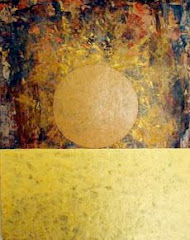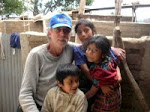INTRODUCTION
One reason I love to bake bread is because each bread is different, an adventure in itself. Where the commercial baker has to strive for uniformity and consistency of product, that won’t have to be your concern or mine. We can be free to explore and innovate, and there’s no need for our loaves to have the appearance of being cloned from a previous loaf.
As an amateur baker, I thought that simply baking would be enough to keep me occupied, but never did I realize that baking outdoors in a wood-fired oven would provide even greater satisfaction than baking indoors in a conventional oven would, but it did. Not only was I baking bread to share, but also firing up the oven during all four seasons added a totally new dimension. Here I was, baking in a manner that has not changed in millennia, a phenomenon most appealing to me. If you enjoy baking bread or would like to learn how, and if constructing your own wood-fired oven interests you, then you should find lots of useful information here. I don’t pretend to be an expert in any of the areas I discuss, truly, I am an amateur. However, because of the pleasures I’ve discovered in bread baking and oven building, I want to share my experiences with you.
We’ll be looking at three very different ovens, and yet in some ways, quite similar. One oven is constructed with mud and the others with brick. The brick ovens take less time to construct than the mud oven, but the materials cost a little more. Each oven fires with wood and the ovens have an incredible capacity to produce unspeakably wonderful breads and pizzas. If they don’t, then you’re doing something wrong, but I’m going to work with you as best I can to help you get it right. The third oven is for flat breads only because there really isn’t enough mass to retain very much heat.
No, you don’t have to be a mason to build the ovens I am going to describe. Just rudimentary construction skills coupled with desire will suffice. I’m definitely not a mason and most masons would probably smile at my lack of skill with the trowels, but my gloved hands get the job done quite well.
You could always choose to have an oven built for you or buy an imported, prefab oven. If you decide to do this, then expect to spend some real money, but you’ll be guaranteed a very fine oven, indeed. In the resources section at the end of the book, I’ll make a couple of recommendations. However, a simple oven you can construct yourself will bake just as well, at a cost of perhaps a few hundred dollars.
To become good at baking, you have to bake a lot and really understand some basic principles. We’ll look in detail at the basic principles, but don’t get discouraged if some of your breads don’t exactly rise to your expectations. Expect some failures, but you’ll learn from them. Our focus will be sourdough breads, raised and flat, but we’ll also be making no-knead breads using a very small amount of active dry yeast.
If the weather in the winter simply becomes too overwhelming, too many snowdrifts to surmount, and your firewood is somehow lost under the snow bank, then you’ll be able to stay in the house and bake breads in your conventional oven. Yes, it’s okay to be the baker who came in from the cold. An indoor technique I employ is baking undercover, and I believe you’ll find the breads made this way can equal and even surpass the breads you make in your outdoor wood-fired oven. What you gain by baking indoors is control. But lots more about this later on. What we won’t be baking indoors is pizza. Pizzas need to be baked on the hearth of a wood-fired oven where the floor temperature is between 600-700 degrees Fahrenheit. You simply can’t attain these temperatures in a conventional oven, but if you have an indoor, wood-fired oven, then no problem. A bake stone in a conventional oven helps, but it’s only a compromise. Most important, however, pizzas need to be kissed by fire. It is the fire that gives pizza that rustic quality. So, for great breads and pizzas, I guess you’ll just have to build a wood-fired oven.







